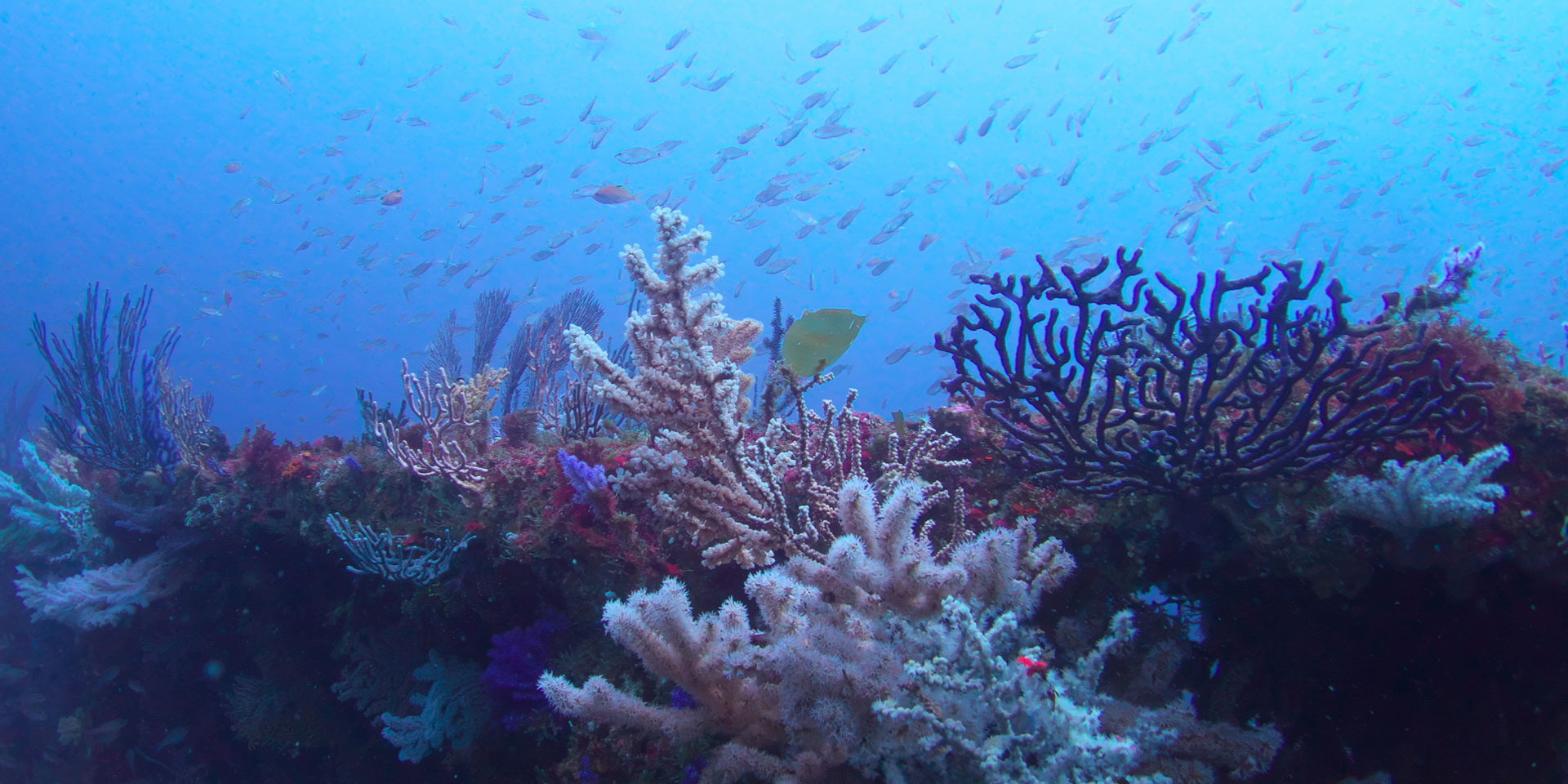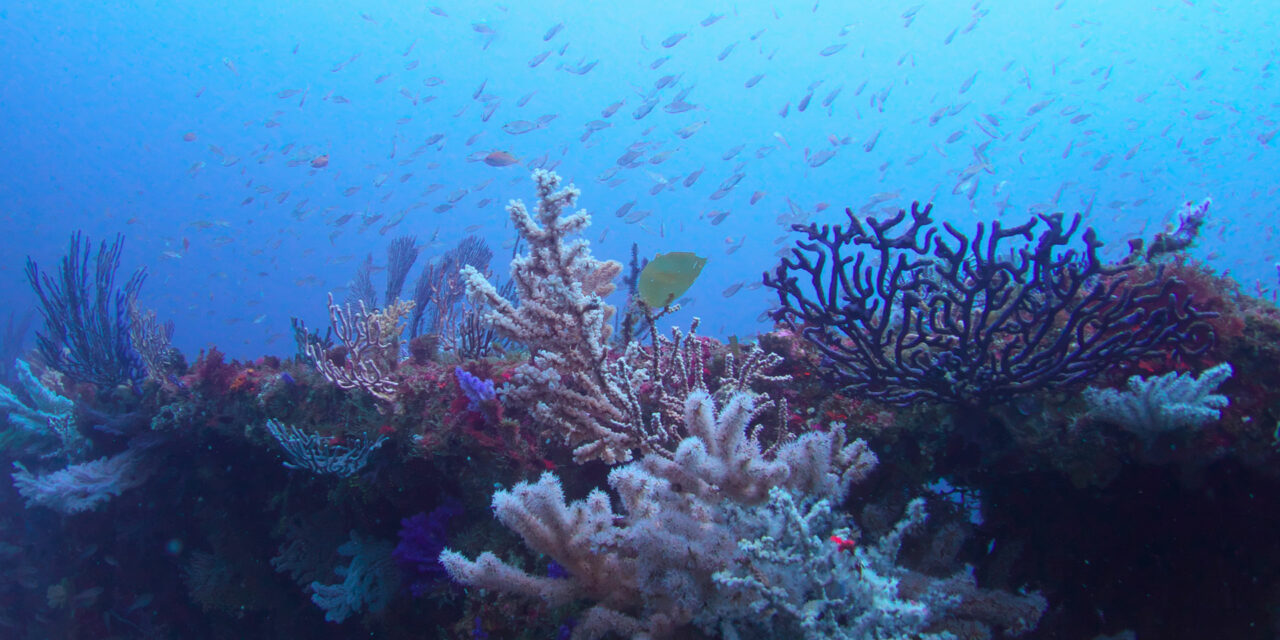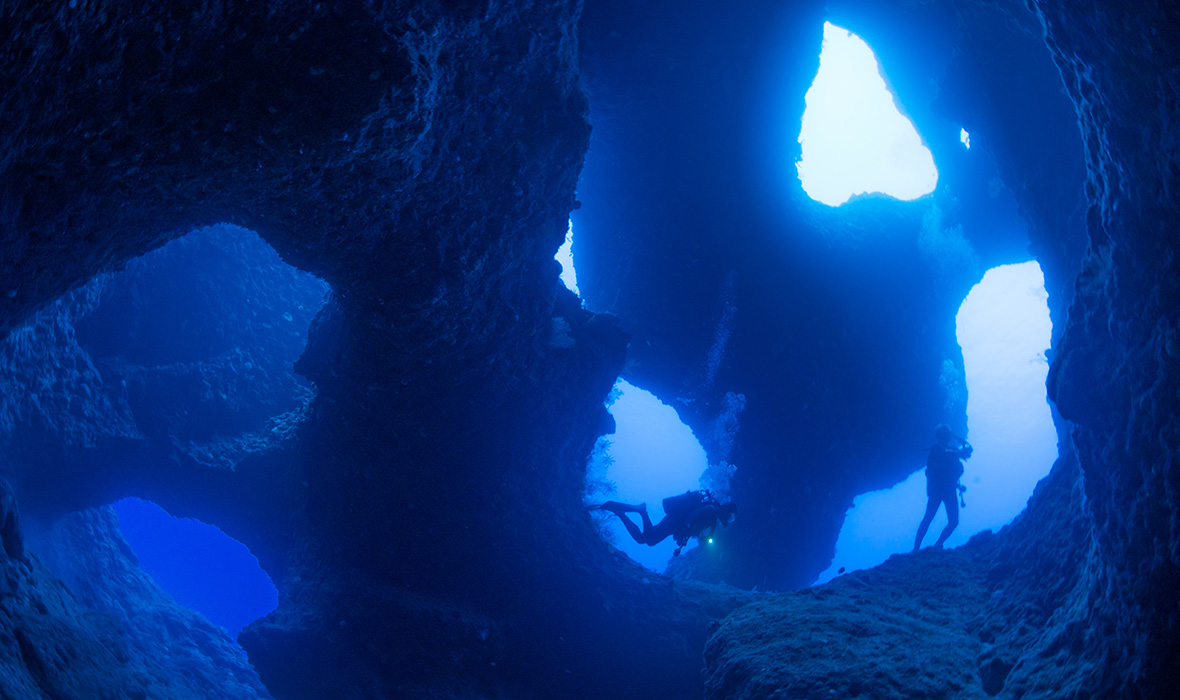Japan doesn’t often make it up there on lists of top dive destinations, but with more than 2,000 dive sites and 34,000 kilometers of coastline it is definitely worth the visit. Okinawa, Hokkaido, and Miyakejima are all well known for diving – each for its own unique features. On Honshu Island – often thought of as Japan’s mainland – however, and only about 40 minutes from Tokyo by bullet train, is the lesser-dived Atami on the Izu Peninsula.
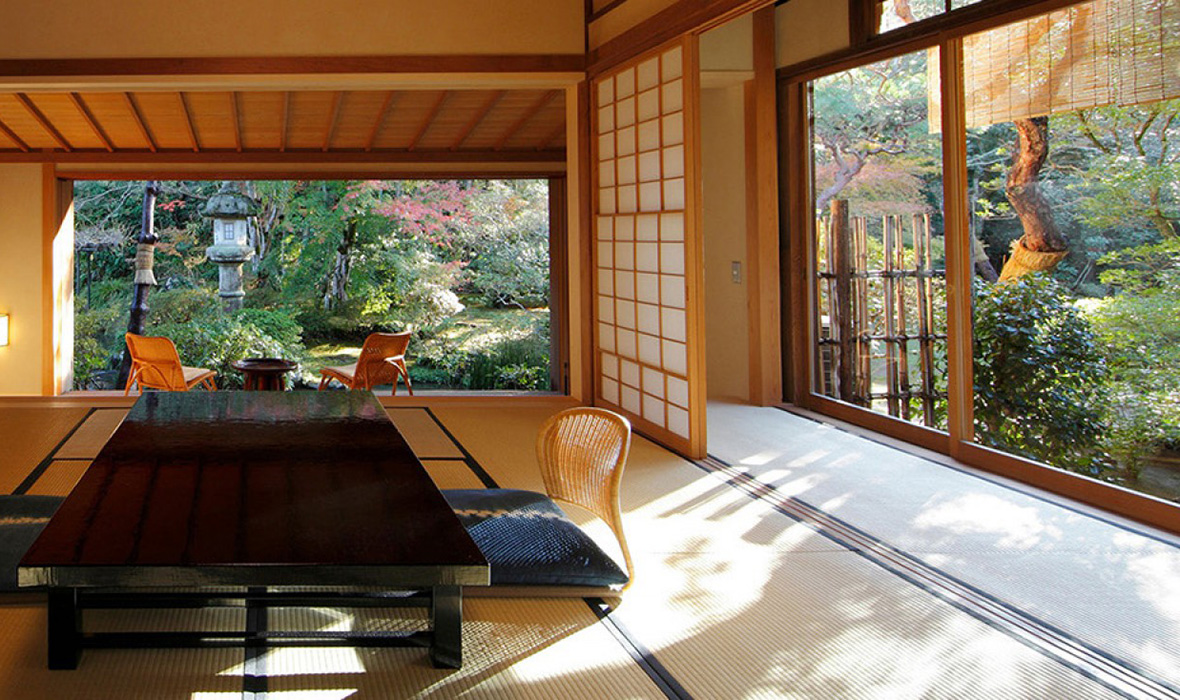
ABOVE: Asaba ryokan on the Izu Peninsula.
Atami is an onsen resort town on the eastern side of the Izu Peninsula, just south of Hakone’s many excellent ryokans and ideally placed for a stay at the Asaba. What better way to end a day of diving than with relaxing in a hot spring?
The main onsens are chloride springs with a high salt content. It is believed that these springs warms the body, fights off chills and eases nerve, joint and muscle pains. Other springs in the area have a high sulphur content which is said to be beneficial for skin diseases, cuts, hypertension, arteriosclerosis and other medical conditions.
Directly sourced onsens receive their water directly from the underground source without being heated or diluted and the water gets expelled afterwards. For an even more unique experience, bathing in one of the Seven Hot Springs of Atami is recommended; this refers to the first seven hot springs that started flowing as early as the 8th century.
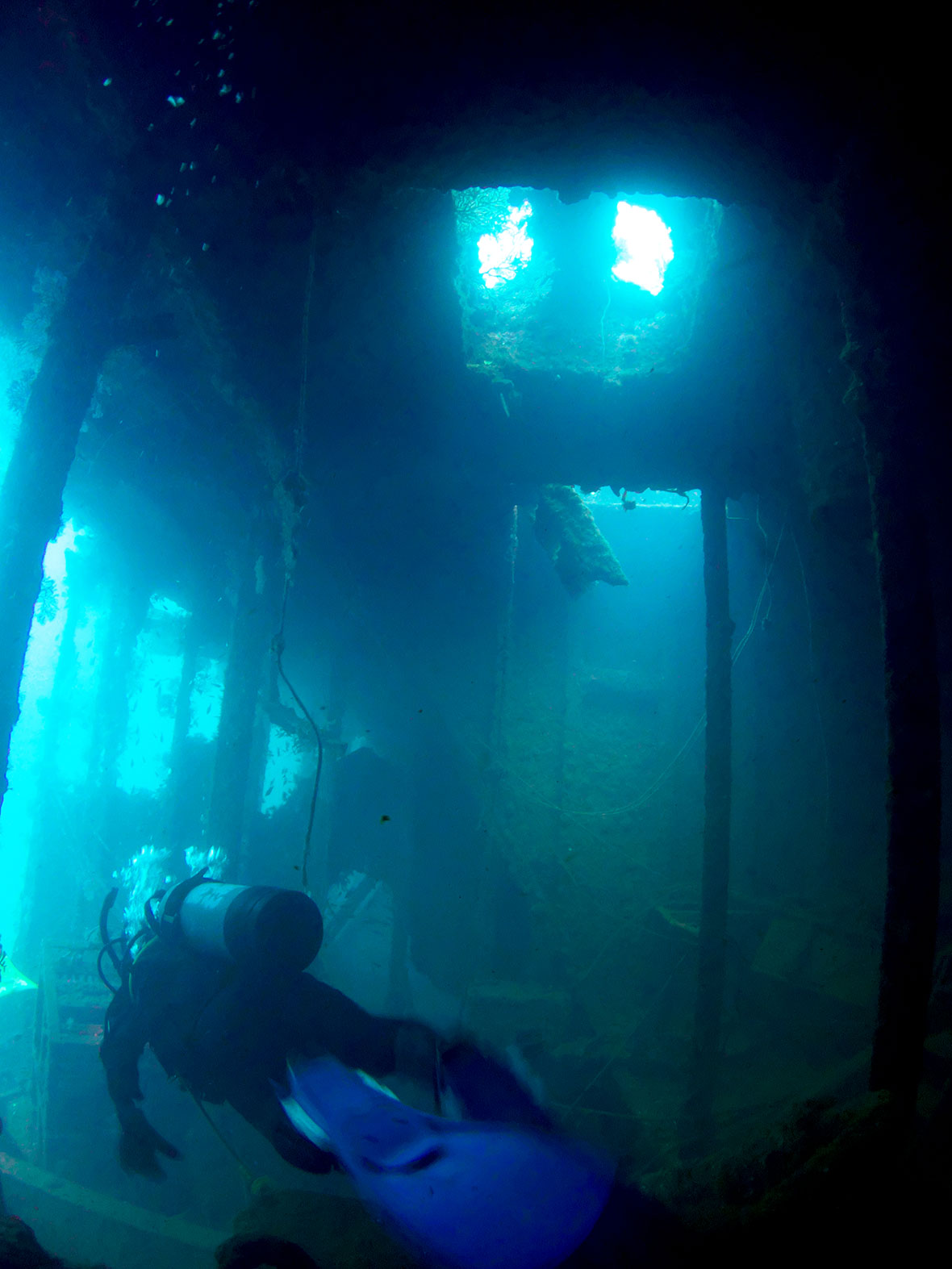
ABOVE: Diver swimming through the wreckage of the Chinsen.
Atami is definitely more famous for its hot springs than its diving, though it is definitely worth it to get under the waves. One of the main underwater attractions is the wreck of the Asahi Maru, known locally as the Chinsen, which directly translates to ‘wreck.’ It is one of the only dive-able ship wrecks off Honshu Island and truly is a dive never to be forgotten.
The Chinsen was a barge carrying large rocks for the harbor walls when it sunk during a typhoon that hit the area about 30 years ago. The 120-meter-long cargo vessel split in two and the sections now lay at a depth of between 25 and 30 meters. It also pulled two tugboats down with it when it sank. As you slowly drift down, following the guide rope into the depths of the ocean, this superstructure seems to rise out of the slightly murky water to meet you at around 21 meters.
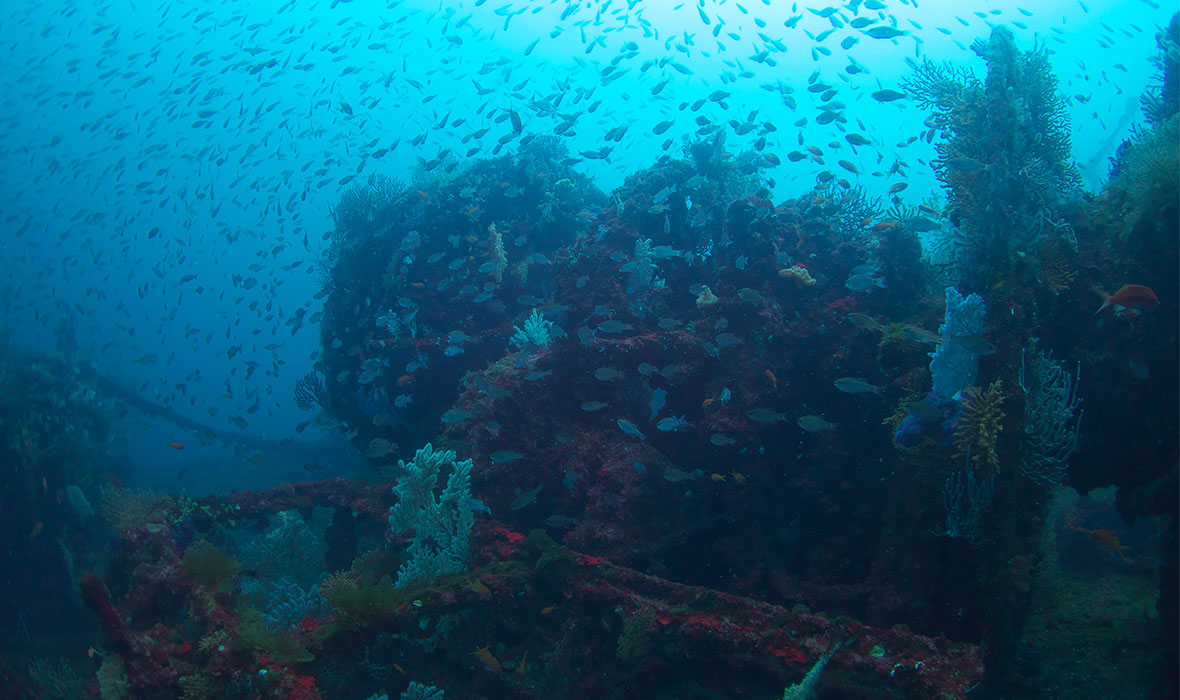
ABOVE: Exterior of the Asahi Maru.
The wreck is covered in hard and soft coral. In the illumination of torch light the coral turns into a fantasy world of vibrant colours. Pinks, purples, oranges, yellows and whites decorate every possible surface of the wreck. Small critters hide among the coral and in the many nooks and crannies of the wreck. Divers can spot moray eels, stone fish, margarita basslets, halflined cardinals, spider crabs and many nudibranchs with schools of fish swimming around.
There can be a slight to mild current on the wreck (which makes it perfect for soft coral growth), and it is a site recommended for advanced divers with experience in diving in currents and some small spaces. The visibility of the water ranges from anything between 5 to 10 meters up to 40 meters depending on the time of the year and ocean conditions.
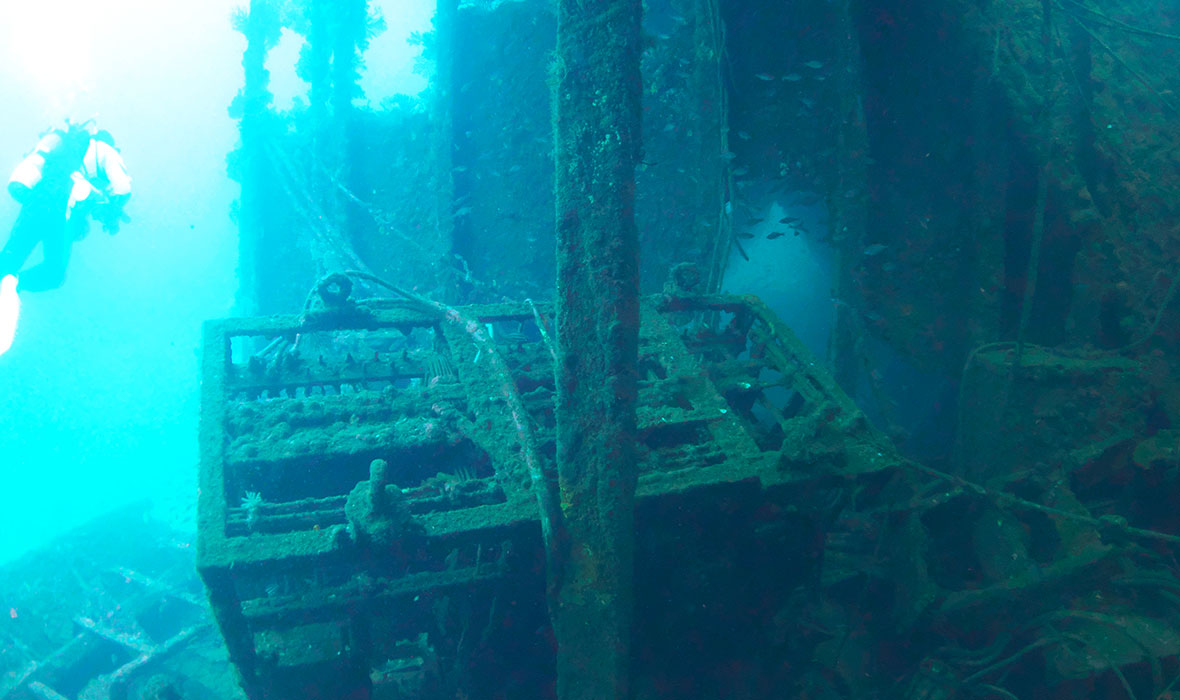
In the winter the water temperature can get as low as 10 degrees Celsius while it can go up to 27 degrees Celsius between August and October.
For qualified and experienced divers there are a number of places to penetrate the wreck with plenty of natural light reaching the inside. The outside of the wreck is simply spectacular and there are a few swim-throughs which make penetration unnecessary. This offers a small conciliation to divers who aren’t confident enough to go into the wreck itself.
Atami offers a wonderful break away from the bustle of Tokyo, and the luxury pleasures of Hakone and Izu don’t hurt either. It combines the thrill of scuba diving with the uncanny experience of diving the wreck of a coral-covered super structure mixed with signature Japan experiences. And, for those who want a little sun, there is even a sandy beach frequented by tourists and locals. All of this plays out amidst the scenic views and cultural experiences that only Japan can offer. Sushi and wreck diving anyone?

